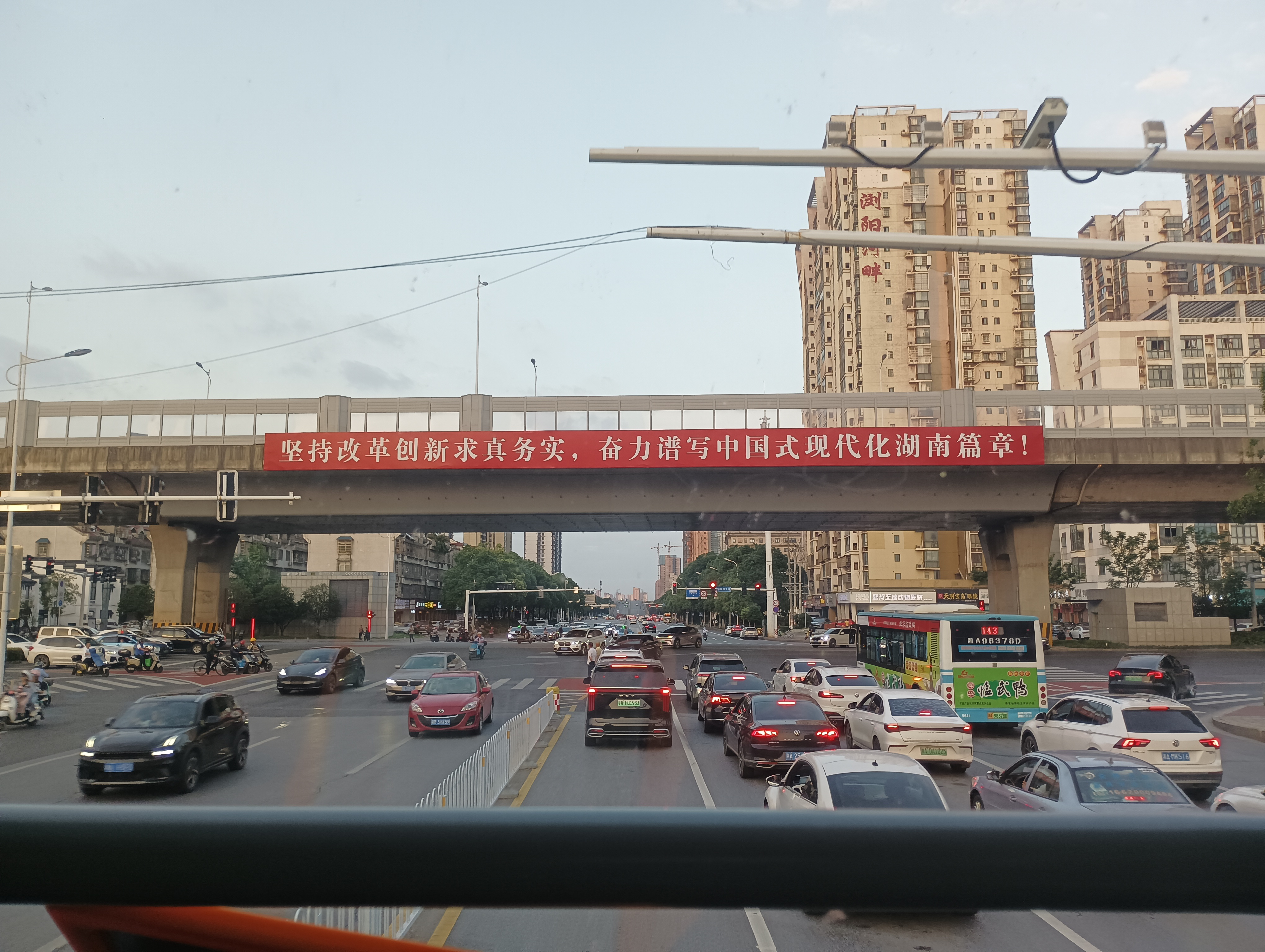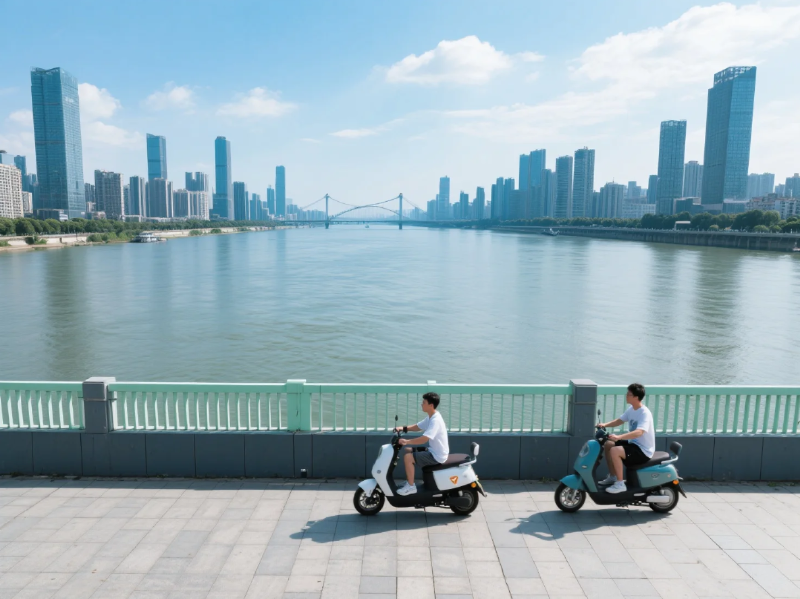“Like a cicada shedding its mortal shell, free from worldly dust, or a butterfly dreaming in the watery clouds (蝉蜕尘埃外,蝶梦水云乡)” This line was penned by the Northern Song Dynasty poet Zhang Xiaoxiang while boating on the Xiang River. Its ethereal imagery perfectly mirrors the hazy longing I once held for the land of Hunan. Not long ago, we had the privilege of joining a school-organized study trip to Hunan. During this time, we traveled between Changsha and Shaoshan, meandering through villages and cities, witnessing the fusion and clash of traditional culture and modern society. Strolling leisurely through the landscapes of Hunan, we gazed toward the future.
Day 1: Packing Up and Crossing Mountains to Hunan
The midday sun was gentle, and the southern wind carried an unusual warmth, unlike its usual scorching heat. The entire grade, along with teachers and staff, boarded a bus to Shenzhen North Station to take the high-speed rail to Changsha. We arrived at the station around half past twelve.
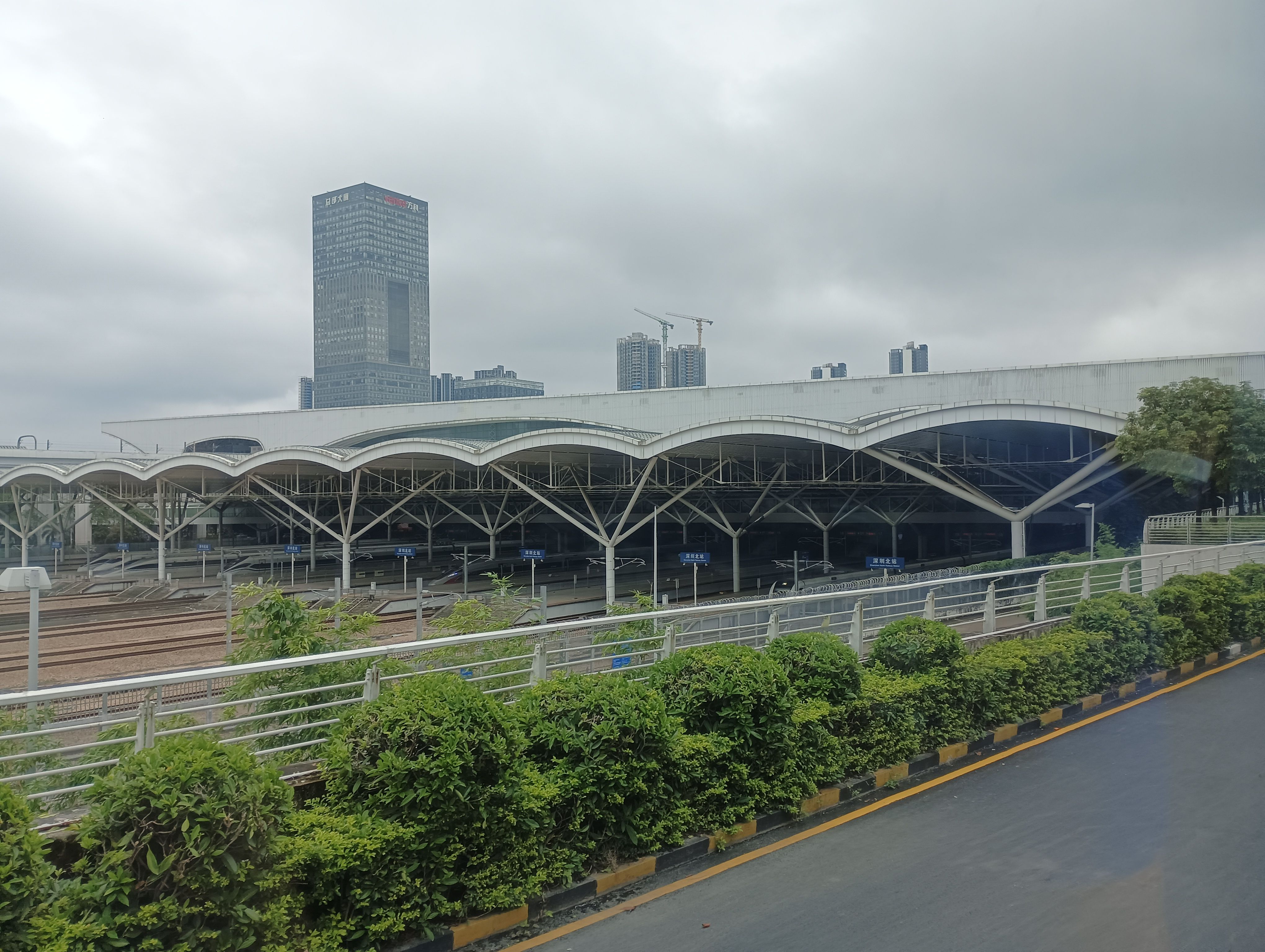
△Distant view of Shenzhen North Station
After waiting for over an hour, we finally boarded the high-speed train. The Fuxing Hao’s sleek design was striking, exuding a modern, technological vibe. It was clear that the school had prioritized student comfort by choosing high-speed rail over slower trains. This not only provided a better travel experience and saved time but also allowed us to witness the advancements in our country’s transportation sector—truly a win-win.
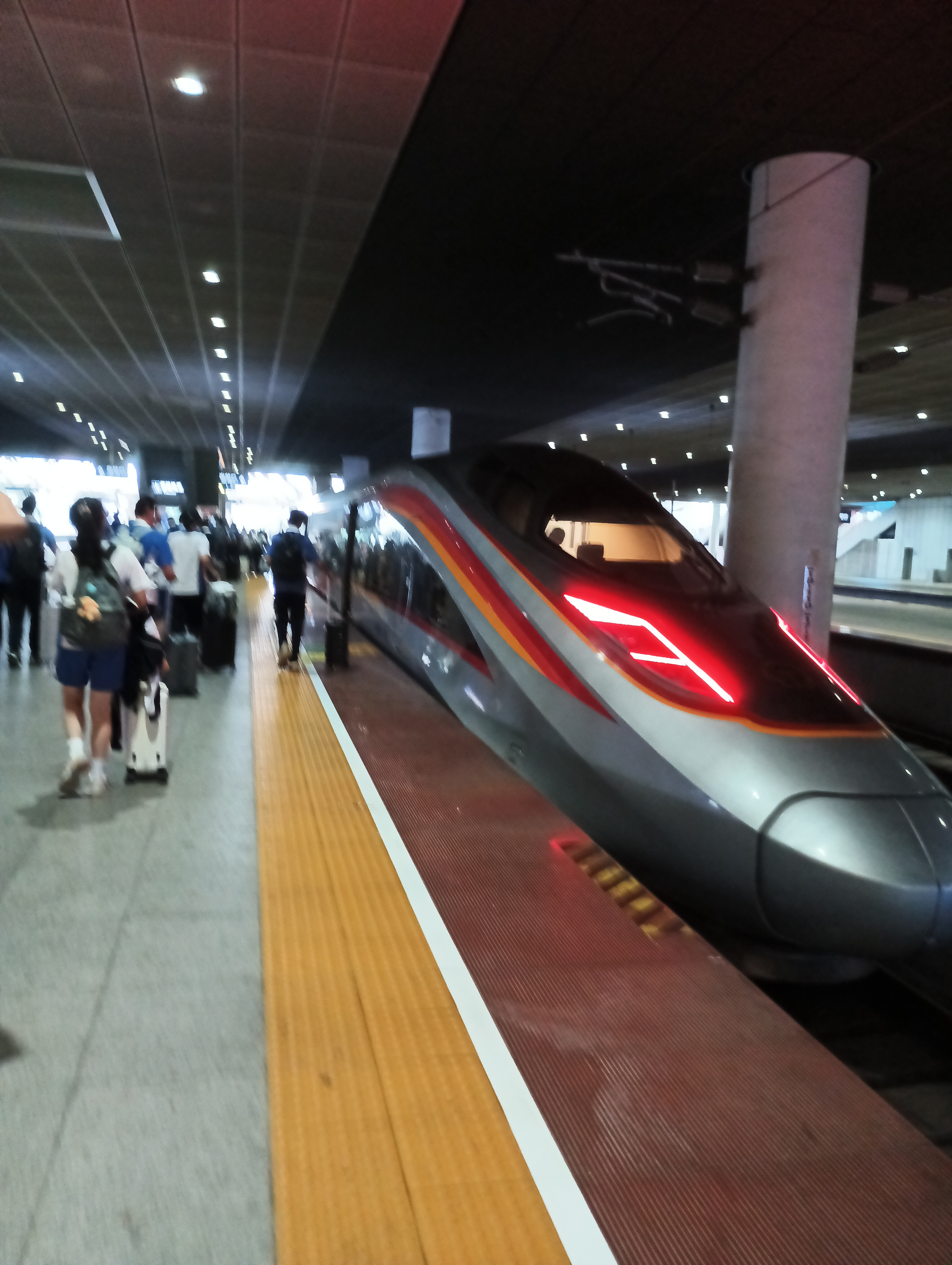

I snapped a few photos of the train while boarding; the two above are the clearest.
Once aboard, I sat by the window, admiring the scenery outside. From the alluvial plains of the Pearl River Delta to the karst landscapes of northern Guangdong, from the hills of southern Hunan to the plains of the north, the views were endlessly captivating. As we passed north of Guangzhou, rain began to fall, tracing hazy lines across the window. In the distance, a river (perhaps a tributary of the Pearl River) was shrouded in mist, with a few barges silently anchored. The drizzling rain evoked a feeling of being in the watery towns of Jiangnan.

Later, we made stops at Shaoguan, Chenzhou, and Hengyang, arriving in Changsha after about three and a half hours.

Three and a half hours on the high-speed rail, covering hundreds of kilometers from south to north. By evening, we arrived at Changsha South Station, where the pulse of modernity greeted us once more. Boarding a bus, I luckily secured a front-row seat, offering a broader view of this unfamiliar city. As night fell, the streets buzzed with traffic, and skyscrapers stood tall. While crossing the Liuyang River, the tour guide chatted casually with us, mentioning the poetic line, “I dream of vast expanses, where the lotus land basks in dawn’s glow.” Our homeroom teacher, a Chinese literature instructor, also recited Qinyuan Chun · Changsha to add to the ambiance. At that moment, the river shimmered under the city lights, and the nightscape outside the window resembled Shenzhen—physically in a foreign land, yet feeling at home. Eventually, we checked into a hotel near Huanghua Airport, where the quietude of the city’s edge settled around us.In contrast to the bustle of the daytime, the first day of our journey came to a close. Though physically a bit weary, my heart was brimming with anticipation for the explorations yet to unfold.
Day 2: Melding Ancient and Modern, the Eternal Flow of the Xiang River
The early morning in Changsha carried the humid air characteristic of the south. We returned to the city, with our first stop being the Hunan Provincial Museum. The crown jewel here is undoubtedly the artifacts unearthed from the Mawangdui Han Tombs. Standing before the deep replica of the tomb pit, waiting for the half-hourly light show, the murmurs of the crowd and their expectant gazes intertwined. During the show, light and shadow danced across the pit walls, transforming into the textile patterns of two thousand years ago and the mythical beasts and auspicious symbols from the silk manuscripts. It carried a solemn, almost religious mystique, leaving one awestruck by the weight of history and the fleeting nature of life, underscored by a faint yet palpable sense of awe.
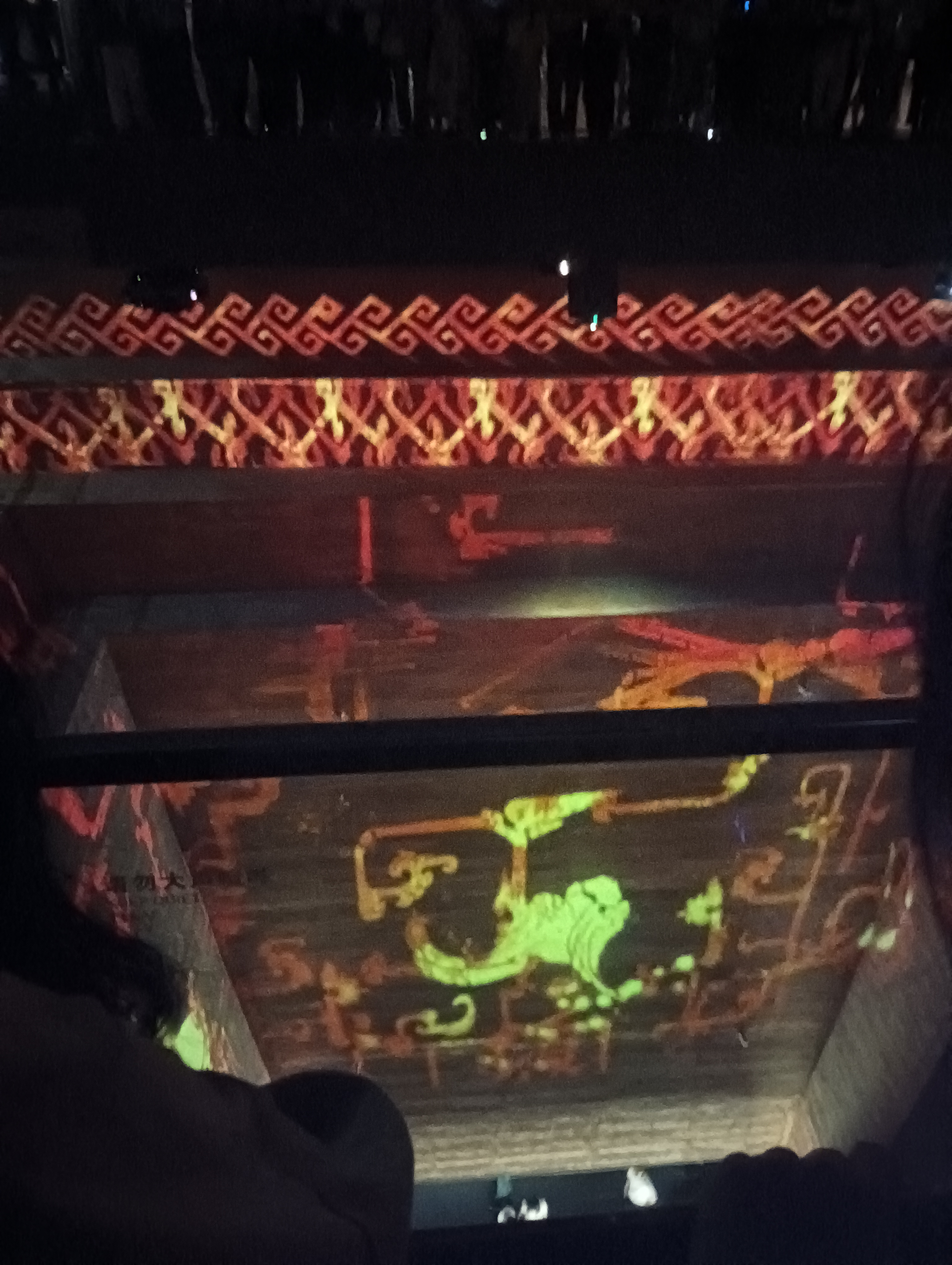
Gazing at the underground palace over ten meters deep before me, I thought of Lady Xin Zhui resting eternally within and the sheer, cloud-like silk garment as light as cicada wings. It was impossible not to marvel at the ingenuity of the ancients and their relentless pursuit of “immortality.”
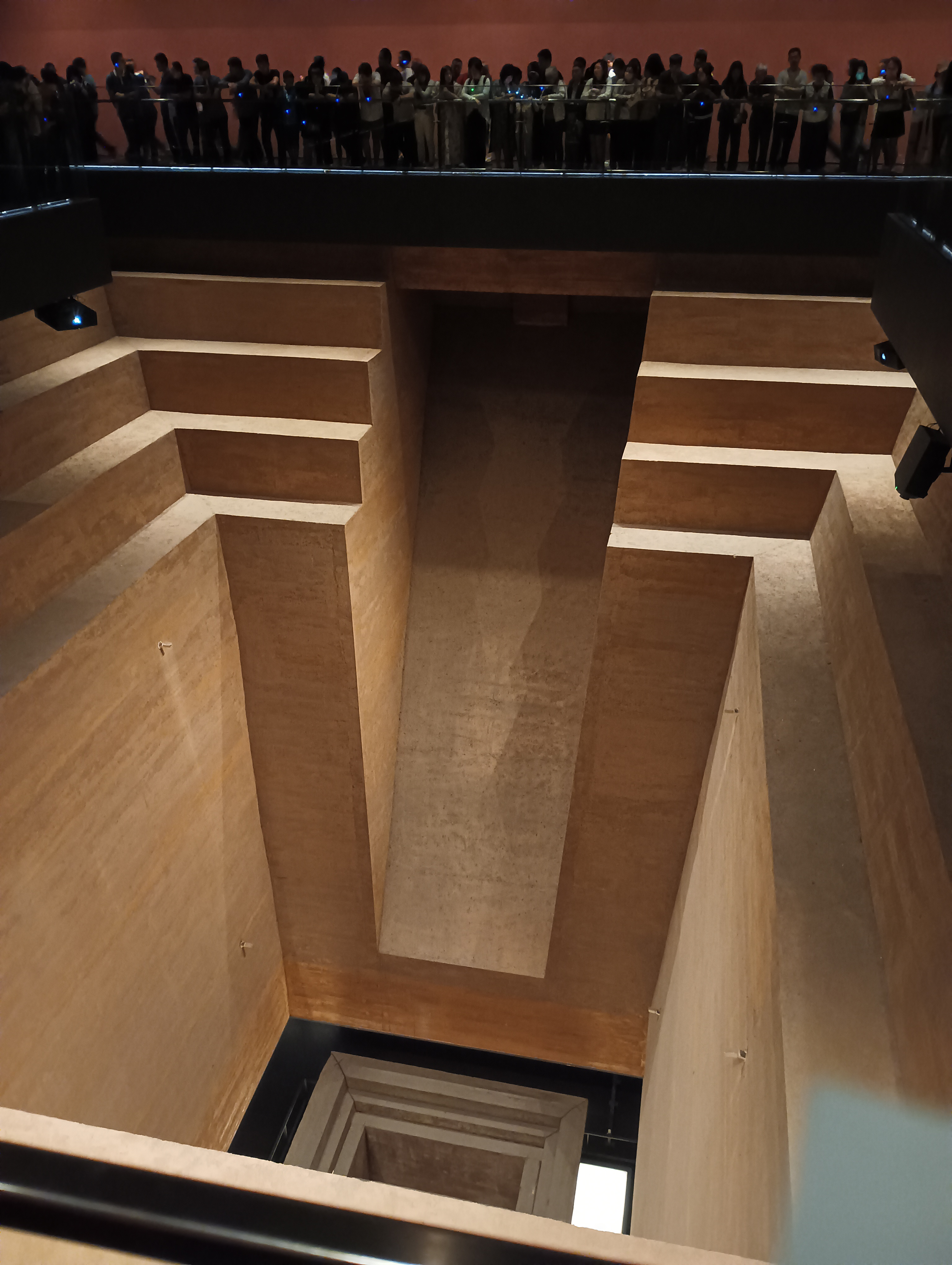
In the afternoon, we crossed the Xiang River and headed to Hunan University and Yuelu Academy at the foot of Yuelu Mountain. The waters of the Xiang River flowed steadily and expansively, a testament to the unbroken literary heritage spanning millennia. Hunan University, this “millennium-old institution of learning,” stood without walls, its red-brick buildings nestled among lush greenery. At the university gate, a few graduates in their academic gowns were taking commemorative photos, adding a youthful vibrancy to the scholarly atmosphere.

Stepping into Yuelu Academy, the words “惟楚有材,于斯为盛” (Only in Chu is there talent, and here it flourishes) immediately caught my eye. Inside the academy, ancient trees towered, their canopies blotting out the sky, while stone tablets stood like forests, each inscription a gem. Walking along the bluestone paths and touching the weathered beams and pillars, I—a “flower of the motherland” who grew up in a “cultural desert” and was “unworldly”—felt, in that moment, a profound connection to history, as if I could empathize with the sages of old.
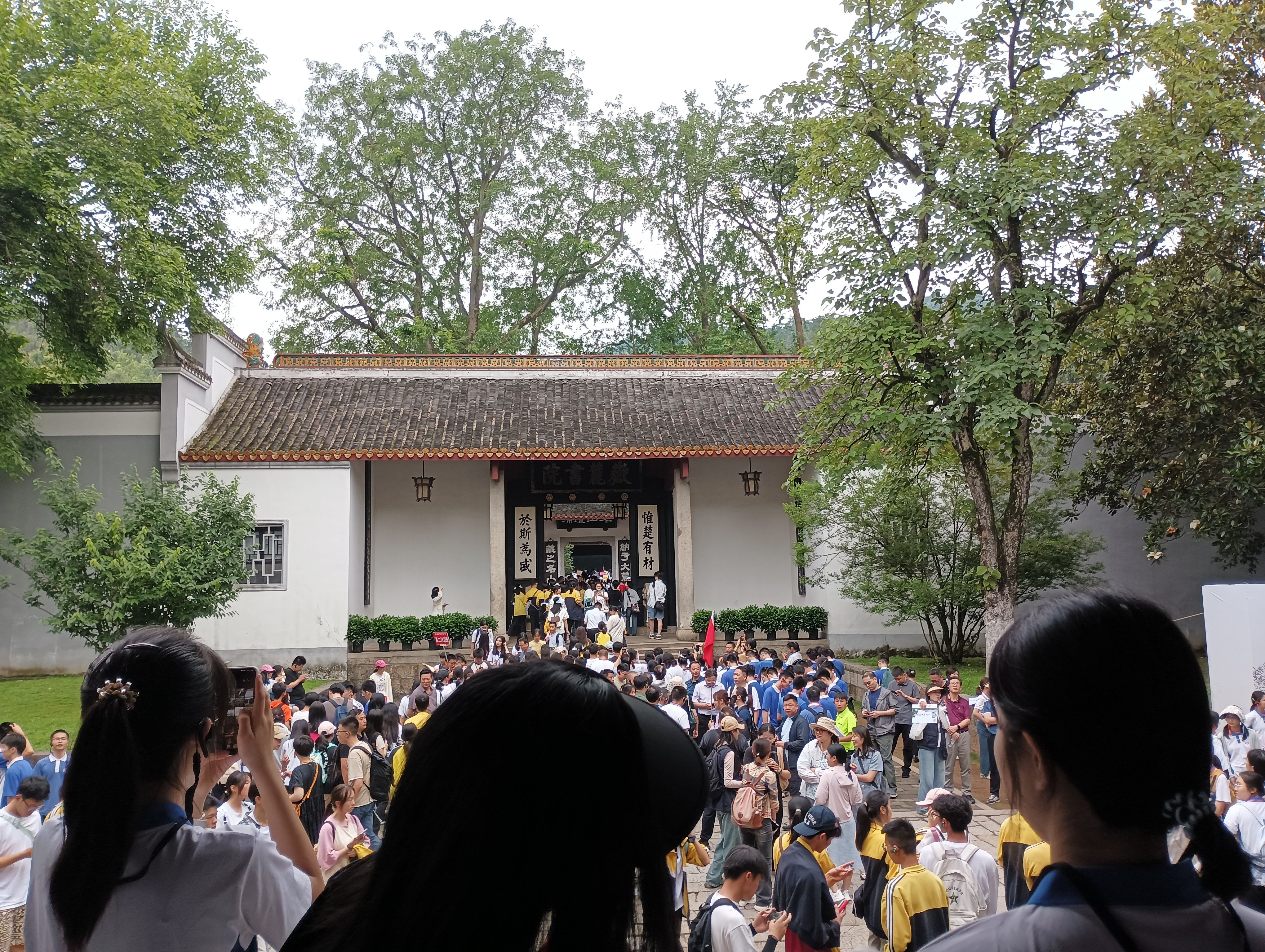
Following the path beside the Quzi Temple and ascending the steps, we arrived at the Aiwan Pavilion. It is said that Du Mu once wandered here, and Tang Bohu (Tang Yin) mentioned the pavilion in one of his poems. The pavilion itself was simple yet elegant, surrounded by verdant greenery. I tried to imagine the poetic ambiance Tang Yin or Du Mu might have experienced here, but with the throngs of tourists around, it seemed difficult for modern visitors to fully grasp the leisurely, carefree mood Tang Yin once enjoyed.
I paint the blue river’s endless flow,
On Aiwan Pavilion, maple leaves sigh in woe.
The autumn moon bathes the temple in its glow.The curling smoke of incense winds around the scripture tower.
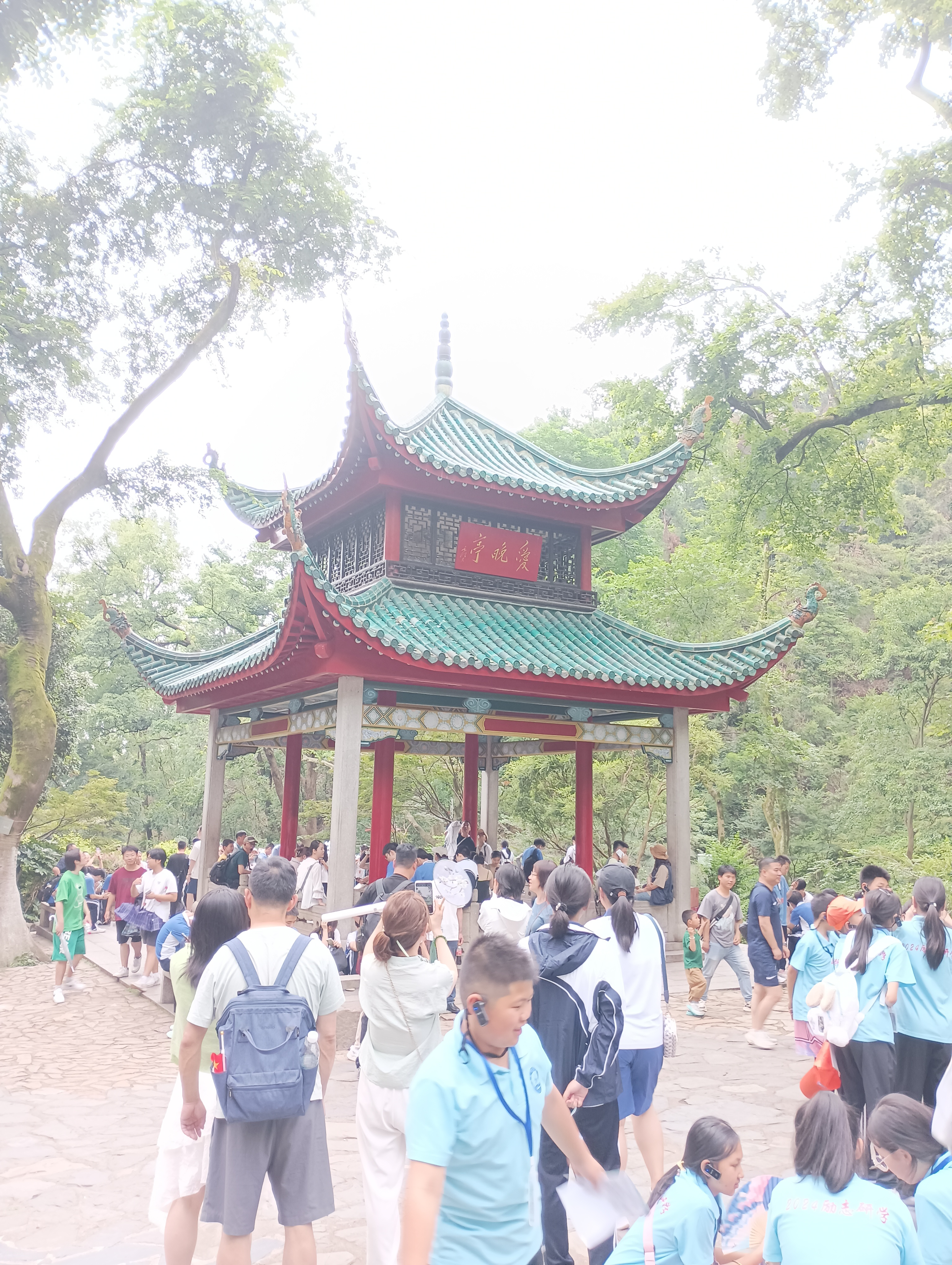
The evening stroll through Taiping Old Street presented a more direct juxtaposition and fusion of classical and modern elements. As “the best-preserved street in Changsha’s ancient city, retaining its original alleyway layout,” it should have been the ideal place to explore the city’s memories. Yet, at first glance, the standardized faux-antique storefronts, the monotonous array of snacks and souvenirs, and the deafening music transform this old street into more of a bustling, colossal marketplace. The exquisite cobblestone paths and remnants of old businesses are nearly drowned in the tide of commercialization.
Of course, rationally speaking, I certainly don’t oppose commerce. I simply lament that it, too, has fallen victim to the nationwide trend of commodifying and homogenizing ancient towns, stripping away much of their cultural charm and leaving the experience rather dull. The nearby Jia Yi Residence, amidst the clamor of the crowd, seems oddly out of place.
So, in the wave of modernization and commercialization, how do we protect these “old places” steeped in cultural memory? How do we meet the leisure needs of modern people without letting these places lose their authenticity? This is precisely the challenge we must face and explore.
That said, the “Black Classic” stinky tofu on Taiping Old Street truly lives up to its reputation, offering me a small taste of “Changsha flavor” amid the noise.
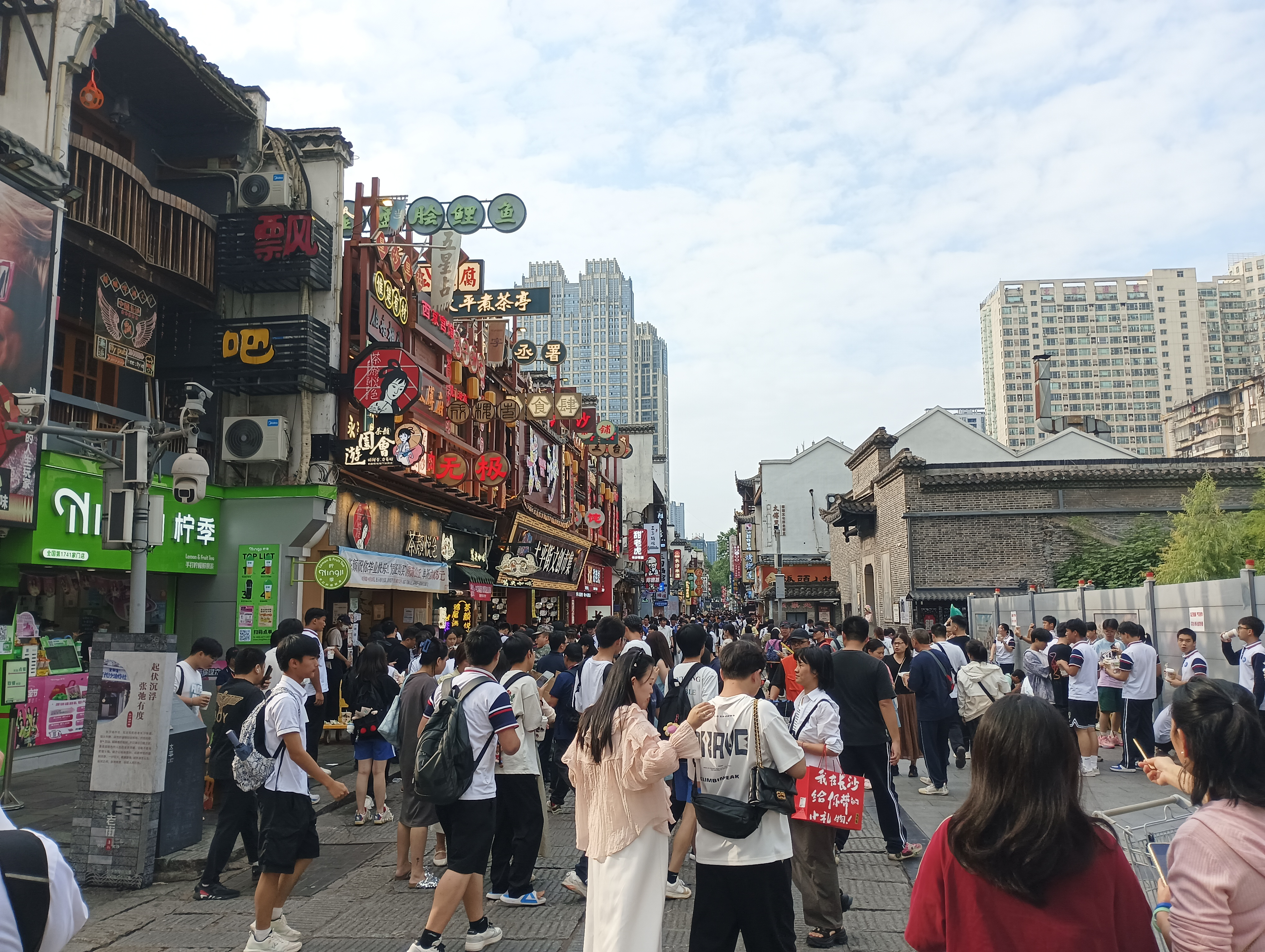
Day 3: Cultivating Joy, Deep Affection for the Red Earth
On the third day, we traveled south from Changsha to Shaoshan. The nearly three-hour drive gradually shifted the view outside the window from city skyscrapers to endless fields and rolling hills. Crossing valleys and plains, fording rivers and traversing wild mountains, we arrived at our destination—the research and practice base in Huangtian Village.
After meeting with the local guide, we headed to the rice paddies for fishing and transplanting seedlings, followed by a meal at a farmhouse. The authentic rural dishes, made with fresh ingredients and simple flavors, were imbued with the warmth of the countryside. After lunch, we took a leisurely walk through the village. Huangtian Village was peaceful and serene, with a few unnamed wildflowers blooming freely by the roadside. Their bright yellow hues dotted the greenery, showcasing an untamed, vibrant vitality.
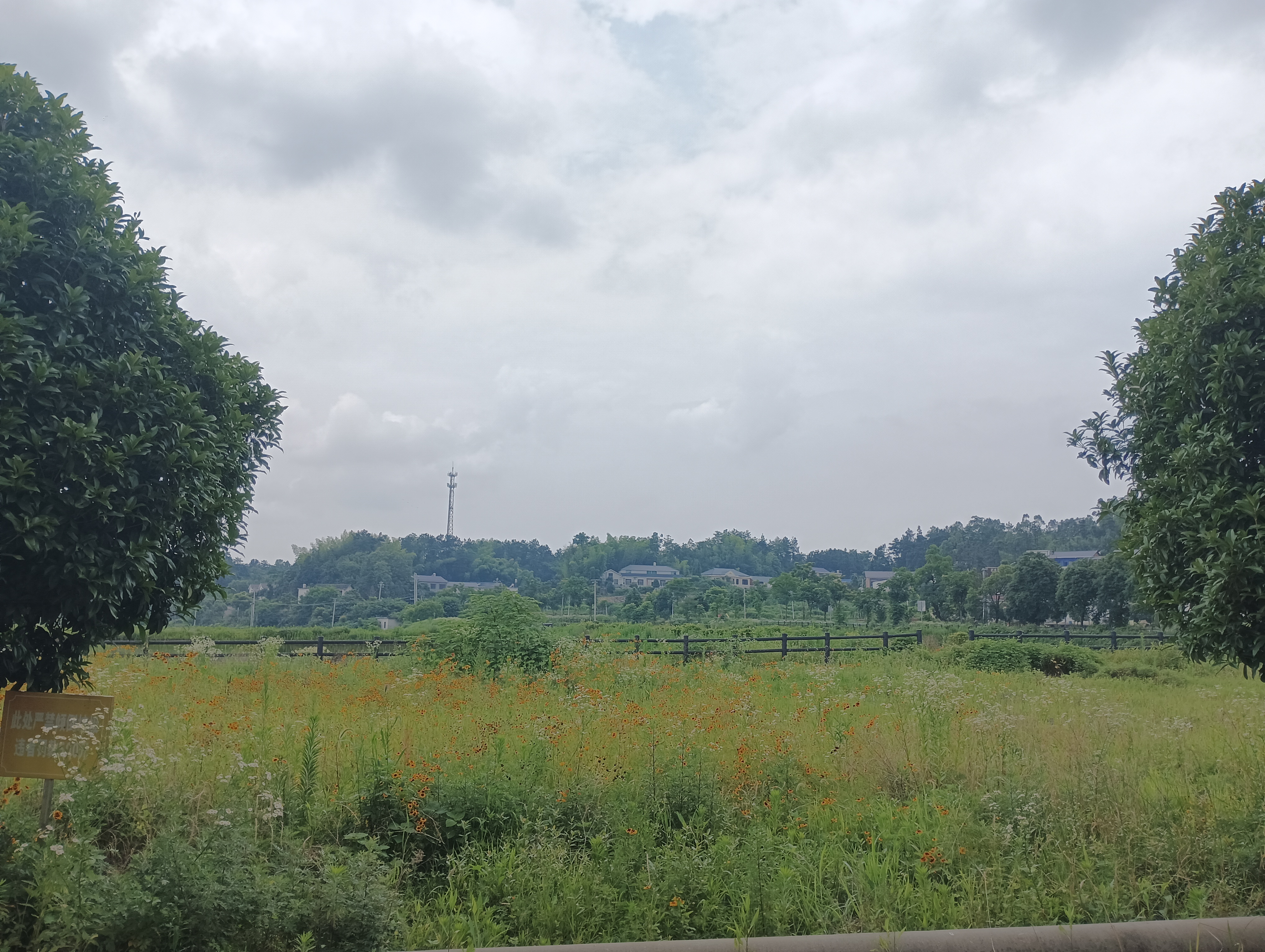
In the afternoon, our group visited the Shaoshan Comrade Mao Zedong Memorial Hall and his former residence with deep reverence. Here, we learned about Chairman Mao’s leadership in guiding the Chinese people to complete the historic tasks of anti-imperialism and anti-feudalism, establish New China, and develop socialism. Inside the memorial hall, detailed historical materials and precious artifacts unfolded the grand narrative of the revolutionary era. The struggles led by Chairman Mao for national independence and the liberation of the people were vividly portrayed.After leaving the memorial hall, we arrived at the Chairman’s former residence. It was a typical southern rural house, nestled in a serene and elegant setting. In front of the house lay a half-acre pond covered with lush lotus leaves, while behind it, verdant mountains embraced the scene, evoking a poetic charm of “overlapping lakes and peaks in pristine beauty.” It was hard to imagine that from such a tranquil, even seemingly ordinary rural courtyard emerged a great man who profoundly altered the course of Chinese and even world history.
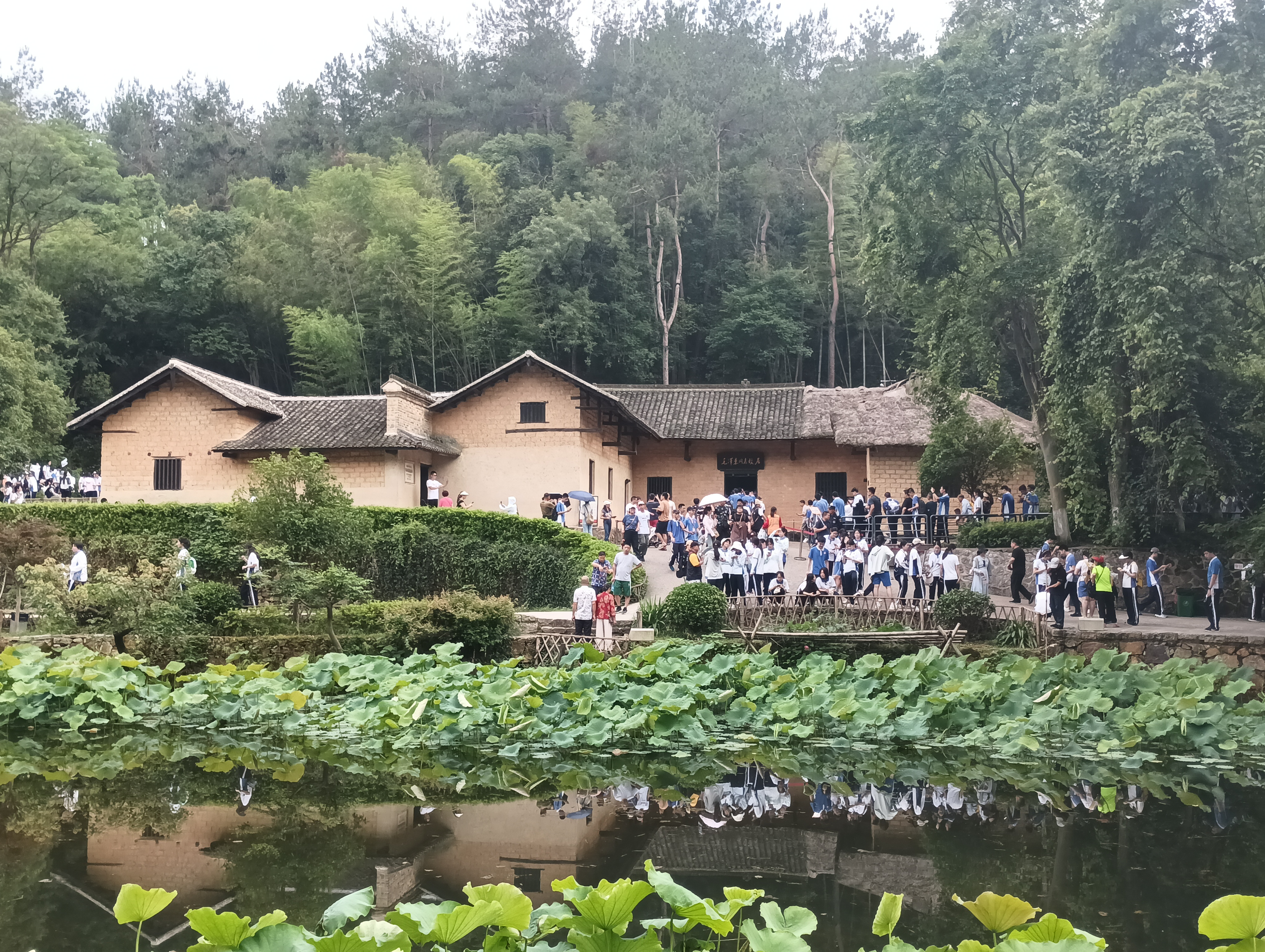
Near the former residence, I unexpectedly ran into two of my middle school classmates. They were also participating in a study trip organized by another high school. Meeting old friends in a distant land felt especially heartwarming. We briefly exchanged updates about our first year of high school life, sharing our feelings and changes as we entered this new phase of life. The passage of time and geographical distance had not diluted our past bond; instead, it made this reunion all the more precious. We took a group photo, wished each other well, and parted with joy.
As night fell, we watched the large-scale live-action performance China Gave Birth to Mao Zedong in Shaoshan. The performance venue was exceptionally vast, and its outline was said to be designed in the shape of China’s map—a detail I could actually recognize on my phone’s map app, which was astonishing in itself. When the lights lit up and the music began, the natural landscape, the actors’ performances, and dazzling light effects intertwined to create a grand historical tableau. The show vividly recreated pivotal moments of the Chinese revolution and the growth trajectory of its leaders in a highly impactful way. The live scene is shown in the image below. The dazzling lights of the performance were truly breathtaking.
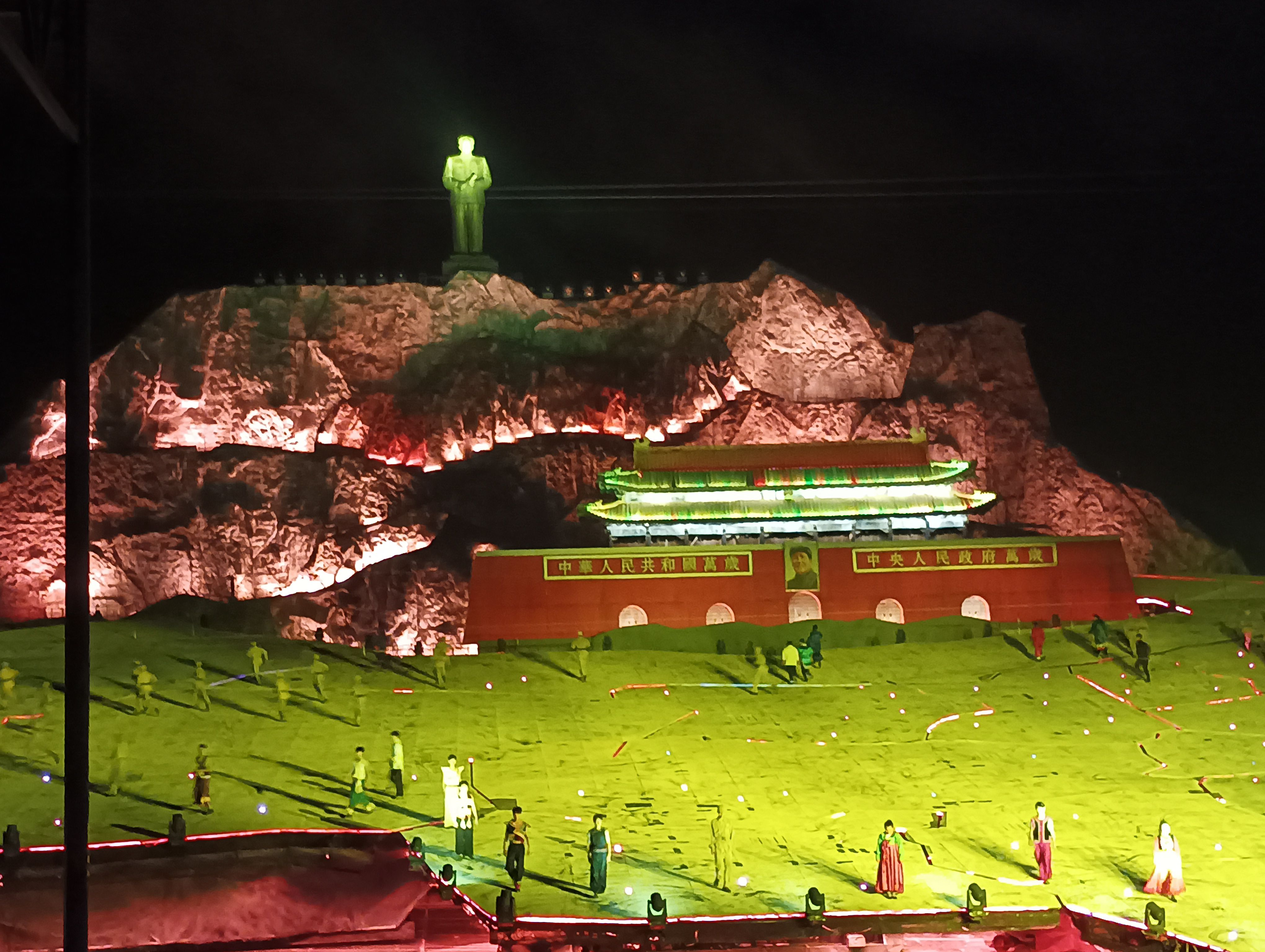
We spent the night at a hotel in Huitang.
Day 4: The Northbound Xiang River, Sentiments on Orange Isle
On the fourth day, we returned to Changsha. The morning’s itinerary included a visit to the Hunan First Normal University (Old Campus), Chairman Mao’s alma mater. Surrounded by red walls and shaded by green trees, this institution, steeped in revolutionary tradition, still maintained a solemn and unpretentious academic atmosphere. Walking through it, one could almost feel the passion and ambition of the young students who once aspired to save the nation and seek truth here.
In the afternoon, we visited Orange Isle. The Xiang River flows through the heart of the city, with Orange Isle resting peacefully in its midst. We took a small train from the northern end of the isle all the way to its southern tip, where our school arranged for the entire grade to take a group photo. While waiting, a few classmates and I strolled along the riverbank. This section of the Xiang River was wide and slow-moving. Standing by the water, watching the southbound flow and the boats gliding past, was a simple yet delightful pleasure.
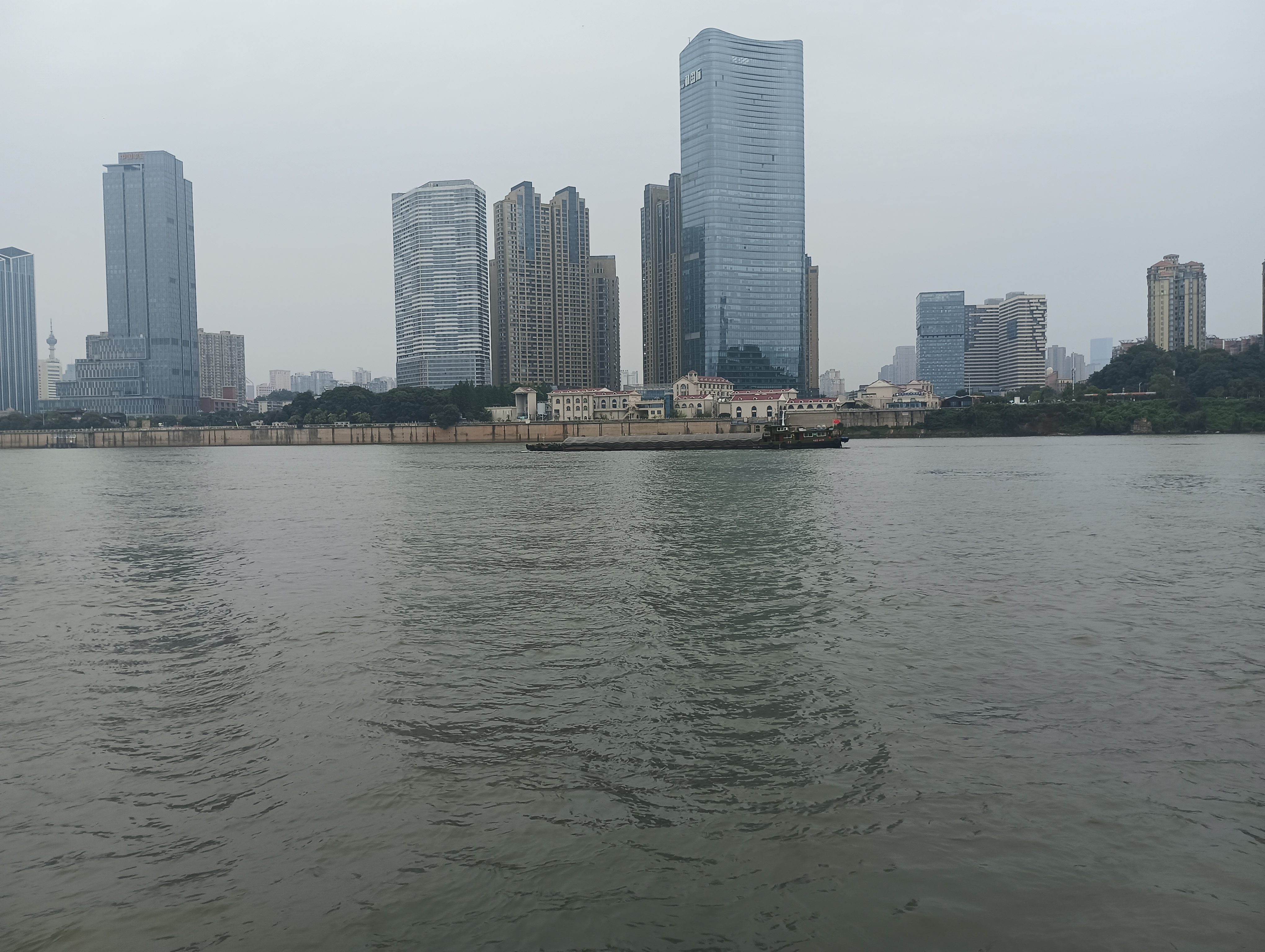
Here, the Xiang River seemed to become especially broad and unhurried. The wide, gentle waters were occasionally broken by passing boats, leaving long ripples in their wake. Gazing at the opposite shore from this vantage point, one couldn’t help but feel a sense of tranquility and timelessness.Standing by the city skyline, feeling the breeze from the river, a sense of expansiveness naturally rises in my heart.
The Northern Song Dynasty poet Zhang Xiaoxiang once praised in his lyrics:
Washing feet in the swift night shallows, drying hair in the cool north wind. Having traversed the hills of Wu and marshes of Chu, only Xiang River remains unseen. Buying a small boat to return, this is a gift from heaven—descending to the blue waves in June. Shedding worldly dust like a cicada, dreaming as a butterfly in the watery mist.
Weaving lotus garments, stringing orchid pendants, holding jade-like blossoms. The Xiang River goddess dances with a smile, plucking the zither to a clear melody. Awakening the loyal indignation of the “Nine Songs,” polishing the words of Qu Yuan, vying with the sun in brilliance. Do not let the youngsters know, this joy is endless.
(in Chinese)
濯足夜滩急,晞发北风凉。吴山楚泽行遍,只欠到潇湘。买得扁舟归去,此事天公付我,六月下沧浪。蝉蜕尘埃外,蝶梦水云乡。
制荷衣,纫兰佩,把琼芳。湘妃起舞一笑,抚瑟奏清商。唤起九歌忠愤,拂拭三闾文字,还与日争光。莫遣儿辈觉,此乐未渠央。
I particularly love the lofty and serene imagery in this poem, which strikes a balance between Su Shi’s bold, unrestrained style and Li Qingzhao’s fresh, elegant grace. Though it is neither “swift night shallows” nor “cool north wind” at this moment, the sentiment of escaping worldly turmoil and seeking spiritual freedom and purity amidst nature transcends the ages. This watery mist realm indeed evokes a fleeting dreamlike sensation, allowing one to momentarily forget mundane affairs.
After taking group photos, we headed north to the Young Mao Zedong Art Sculpture. The statue’s gaze is piercing, reminiscent of the Chairman’s spirit to “point out the rivers and mountains, stirring words with passion.”

Later in the evening, unexpectedly, we returned near Shaoshan to attend a bonfire party. Under the deep night sky, the bonfire blazed brightly, and fireworks burst into dazzling brilliance, briefly illuminating the darkness before fading into silence, offering a fleeting yet intense thrill. During the class chorus segment, I initially stepped aside due to my lack of singing prowess, but a few “good buddies” half-jokingly and half-seriously “dragged” me onto the stage. This scene happened to be captured by a classmate working for the school TV station and later became a “highlight” in the event coverage, gaining a bit of fame across the campus.
Day 5: The Fragrance of Rice and Homeward Bound
In the morning, we visited the Yuan Longping Rice Museum, and in the afternoon, we boarded the high-speed train, returning to Shenzhen by evening.
In the afternoon, we once again boarded the high-speed train, heading back to Shenzhen. The “Fuxing” train glided smoothly as ever, the scenery outside the window receding swiftly. Watching the ever-changing speed on the digital display—sometimes reaching 306 km/h—a sense of pride for the nation’s technological progress welled up in me once more. The three-hour journey seemed to pass faster than the outbound trip, perhaps because my heart was already filled with the experiences and reflections of the past five days. Throughout the ride, I organized my travel notes in Obsidian, hoping to compile them into a blog post to publish on my website as a keepsake.
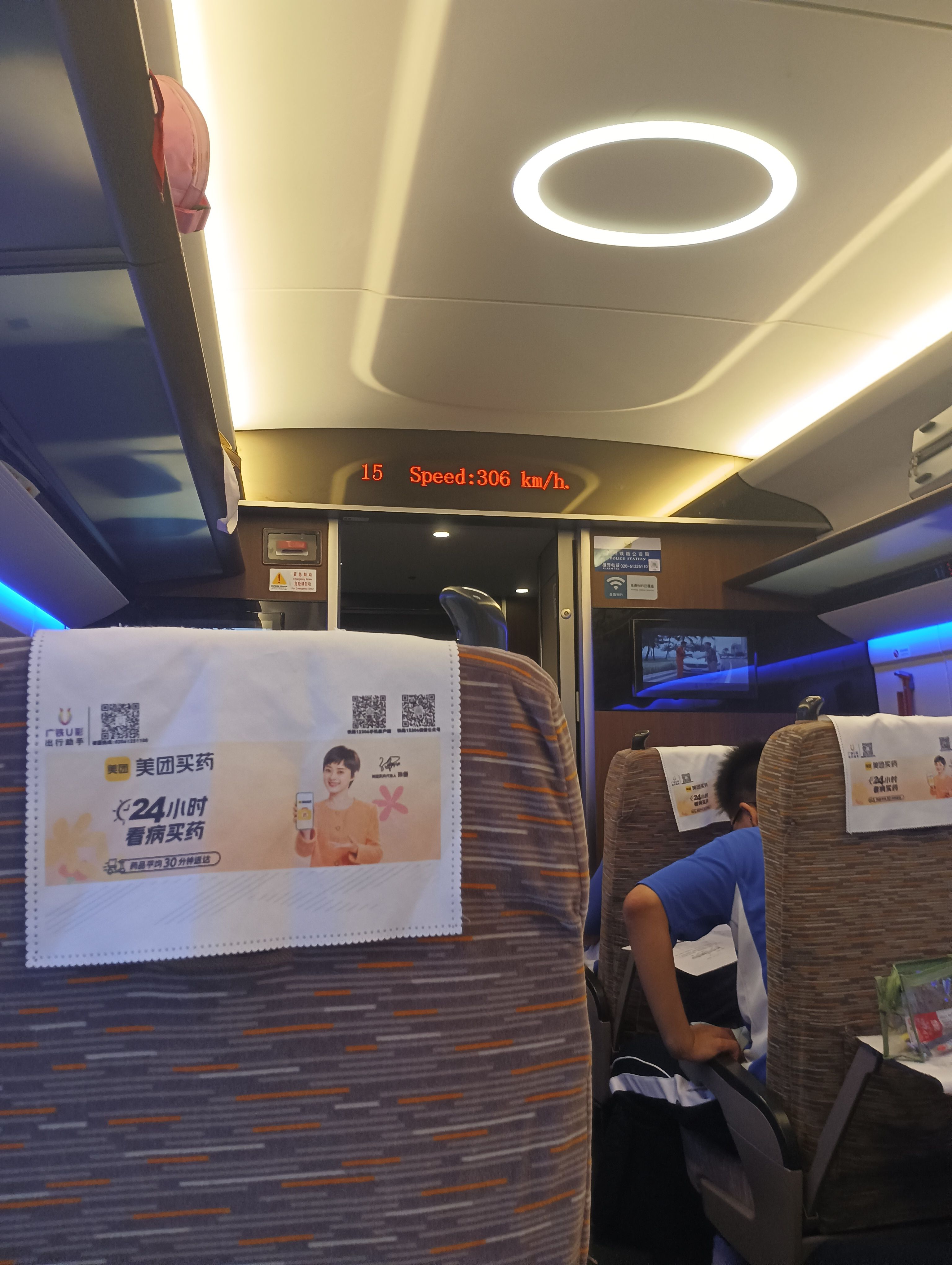
Return train made fewer stops, so we arrived at the North Station in just three hours. The group disbanded near the station, marking the successful conclusion of the study trip.
Epilogue: Reflecting Through Travel, Growing Through Practice
Over these five days, journeying from south to north, our thoughts soared like drifting clouds. From the modern metropolis of Shenzhen to the fusion of past and present in Changsha; from the ancient glow of the Mawangdui Han tombs to the thousand-year scholarly heritage of Yuelu Academy; from the revolutionary imprints in the hometown of great leaders to the golden hopes at the Yuan Longping Rice Museum; from the bustling noise of the city to the simple tranquility of the countryside—we traversed different coordinates of time and space, witnessing dialogues between history and reality, and experiencing the tension between tradition and modernity.
Hunan, this land hailed as “Only in Chu is there talent, and here it flourishes most,” revealed its rich layers to us. It boasts a cultural legacy spanning millennia, yet also embodies the pragmatic spirit of daring to lead and applying knowledge to real-world challenges. It nurtured revolutionary fervor that reshaped the world, as well as the humble ideal of “a single grain of rice” benefiting humanity. Amid the commercial waves of Taiping Old Street, I felt a tinge of loss, pondering the balance between cultural preservation and modern development. Before the ancient steles of Yuelu Academy, I glimpsed the purity of transcending utilitarianism to seek “the greatest truth.” And on the red soil of Shaoshan, I understood how ideals and convictions can sustain individuals—even entire nations—through trials and tribulations.
Zhang Xiaoxiang’s line, “Like a cicada shedding its earthly shell, like a butterfly dreaming of waters and clouds,” once captured my vague longing for this journey. Now, upon returning, I grasp its deeper meaning. The “cicada shedding” may symbolize us, the youth, needing to shed the naivety and biases of our perceptions through travel and observation, much like a cicada discarding its old shell. The “butterfly dream,” meanwhile, represents the aspirations we begin to nurture in this vibrant “land of waters and clouds”—dreams of the future, of responsibility, and of how to make this land even more beautiful.
Through this study trip, we learned about culture, history, and heritage. Today, in an era of flourishing prosperity, standing amidst the grand currents of “unprecedented changes in a century,” we are fortunate to possess a broader vision than ever before, allowing us to stand atop the peaks of history and gaze toward a dazzling, once-distant future. The magnificent scroll of national rejuvenation unfolds before our eyes, both inspiring and urging us forward.
Thus, as synthesizers of new knowledge, explorers of new ideas, and pioneers of a new era, we naturally shoulder a weighty and sacred mission. “So many urgent matters, time presses as heaven and earth turn.” As the future of our nation and the hope of our people, we are acutely aware of the gravity and honor of our responsibility. We pledge to illuminate the world with China’s unique wisdom, innovative solutions, and steadfast actions, shaping a brighter tomorrow where China’s voice resonates globally and the world becomes more vibrant because of our generation of youth!
